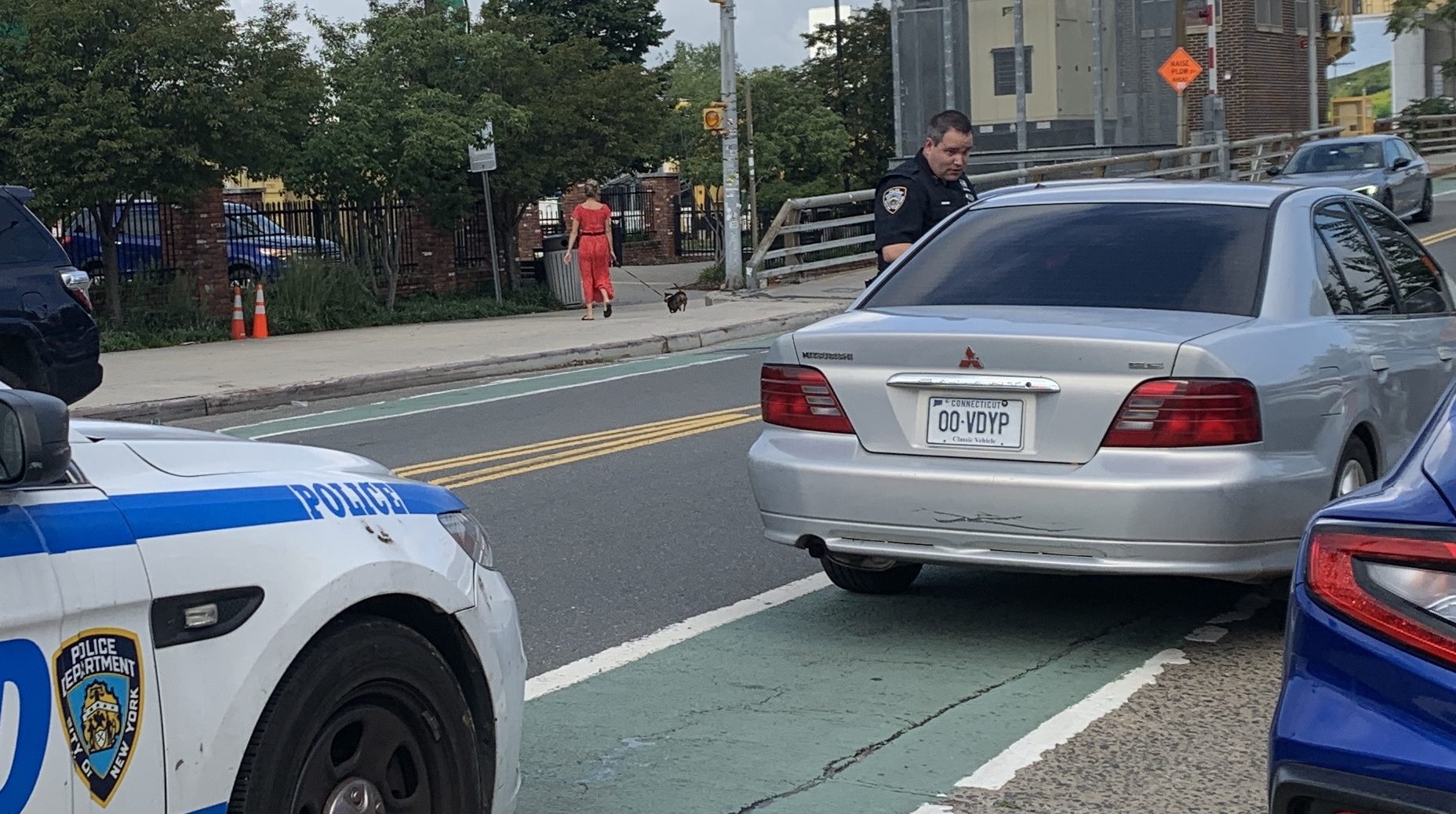We don't really think about other cities, but a tweet caught my eye last week that revealed that the San Francisco Police Department had all but abandoned traffic enforcement since basically 2015.
At Streetsblog NYC, we've tracked a similar, though smaller, decline in NYPD enforcement efforts.
Now, I admit I only have half a brain, but that half a brain is of two minds on the NYPD's pullback from traffic enforcement. Obviously, the goal of Vision Zero is to engineer streets in such a way that speeding, red-light running and failure to yield are so difficult that the roadway becomes ostensibly self-enforcing. (We've covered that, too.)
And we've also covered the fact that traffic stops often have a racial bias that leads to violence against people of color. According to 2022 data, Blacks and Latinos, who are roughly 52 percent of the population, comprised 55 percent of people stopped by the NYPD — and 90 percent of arrests made during those stops, according to NYPD data.
But it would be nice if cops didn't ignore so many reckless drivers.
That's a big windup to reveal the NYPD's enforcement stats so far this year, compared to previous years: Between January and July of this year, ticketing in all classes of moving violations are down 38 percent compared to the recent high in 2018.
And this year's 408,173 moving violations between Jan. 1 and July 31 is 36 percent lower than the pre-pandemic average for the first seven months of the year dating back to 2012.
We asked the NYPD, "What's up with that?" and here is what an agency spokesperson said, verbatim: "In addition to the rise in 911 calls for service and officers responding to over 4,100 protests this year, the Department has increased our focus to addressing fraudulent license plates and moped enforcement."
Of course, there's one problem with that (only one?!): 911 calls are actually down from 2022 and up only 0.2 percent this year (from 3,637,486 in the first half of 2023 to 3,644,715 in the first half of 2024).
So this 0.2-percent "rise" is clearly not responsible for the massive decline in enforcement. (The spokesperson declined to respond to additional questions regarding the alleged increased focus on ghost cars and illegal mopeds, so it's hard to know the numbers there).
In any event, here's a chart of all this. Tell us what you think in the comments:
In other news from a quiet livable streets weekend:
- The biggest story of the weekend, frankly, was our massive investigation (in collaboration with Shtetl magazine) about people who create non-profits to issue "chaplain" placards that are not legitimate. Sophia Lebowitz of Streetsblog and Naftuli Moster of Shtetl deserve a hat tip (if not a fake chaplain badge!).
- Wars get memorials. But the victims of traffic violence don't — and that explains a lot about why we abhor the human toll of war, but yet shrug at the human cost of the second. (Next City).
- Unofficial traffic signs with Donald Trump's silhouette are showing up in some MAGA strongholds in the city. (NY Post)
- It's nice what you can do on streets when drivers aren't using them to speed through your neighborhood. (NY Post)
- Should the MTA keep pursuing expansion projects like the Interborough Express or the Second Avenue Subway? (Gothamist)
- If you give students free Metro Cards, they will use them. (The City)
- It's not so easy to buy new rail cars, says former federal transit man, Larry Penner. (Mass Transit)
- Looks like the NYPD killed a popular open street in Bedford-Stuyvesant. (Hell Gate)
- And, finally, clearly cyclists are the danger on our streets, amirite?
Jack Doherty just crashed his brand new McLaren on stream 😳 https://t.co/WNnKGbmHbD
— FearBuck (@FearedBuck) October 5, 2024






